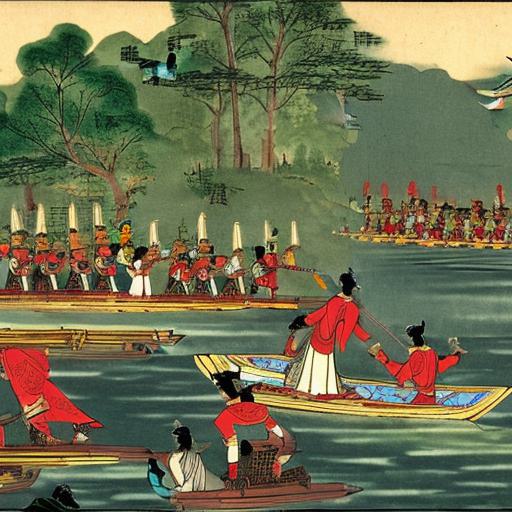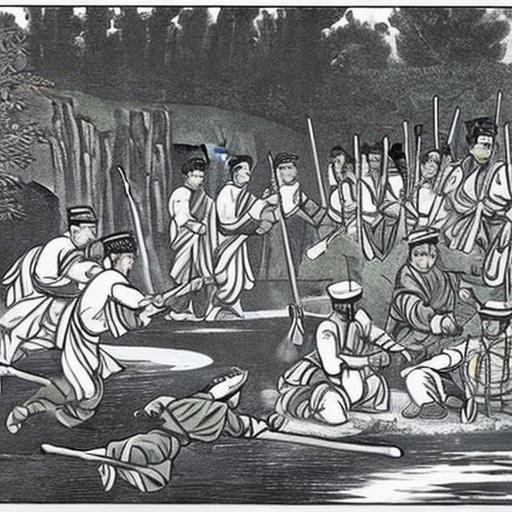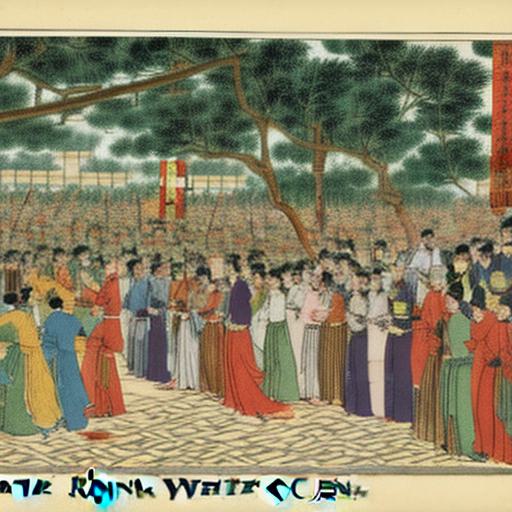The White Lotus Rebellion was one of the most significant peasant uprisings in Chinese history. It lasted from 1796 to 1804 and challenged the authority of the Qing dynasty, which had ruled China since 1644. The rebellion was initiated by followers of the White Lotus movement, a religious sect that combined elements of Buddhism, Daoism, and folk beliefs. The White Lotus movement had a long history of resistance against foreign rulers, dating back to the Mongol Yuan dynasty (1271-1368) and the Red Turban Rebellion that helped establish the Ming dynasty (1368-1644). The White Lotus followers believed that the Qing dynasty, which was founded by the Manchu people from north-eastern China, was illegitimate and oppressive. They also hoped for the imminent return of the Buddha and the advent of a new era of peace and justice.
The rebellion broke out in 1796 in the mountainous regions of central China, where poverty, famine, corruption, and heavy taxation had created widespread discontent among the peasants. The rebels claimed to have White Lotus affiliations and adopted various symbols and slogans associated with the movement, such as the colour white, the lotus flower, and the phrase “sweep away the Qing”. They organized themselves into roving bands of fighters who used guerrilla tactics to attack government troops and officials. They also recruited followers from various ethnic groups, such as the Hui Muslims, the Miao, and the Tujia. The rebellion soon spread to several provinces, including Hubei, Shaanxi, Sichuan, Henan, and Shandong.
A New Emperor
The Qing government initially underestimated the threat of the rebellion and failed to suppress it effectively. The Qianlong emperor (r. 1735-1796), who was in his eighties and nearing the end of his reign, delegated the responsibility of quelling the rebellion to his favourite courtier, Heshen, who was notoriously corrupt and incompetent. Heshen embezzled large sums of money that were meant for military expenses and appointed his cronies to key positions. He also tried to appease the rebels by offering them amnesty and rewards, but this only encouraged more people to join the uprising. The Qing army, which was composed mainly of Manchu and Mongol troops (Bannermen), was ill-equipped and ill-disciplined to deal with the rebels’ mobility and familiarity with the terrain.
The situation changed after the Qianlong emperor died in 1799 and was succeeded by his son, the Jiaqing emperor (r. 1796-1820), who was determined to restore order and stability. He dismissed Heshen and executed him for his crimes. He also reformed the military system and appointed capable generals to lead the campaign against the rebels. He adopted a strategy of isolating and starving the rebels by removing all food supplies from the countryside and relocating the peasants into fortified villages (tunbao) that were guarded by local militias (tuanlian). Some of these militias were also trained as offensive forces that could pursue and attack the rebels in their hideouts. The Qing government also intensified its propaganda efforts to discredit the White Lotus movement and its leaders, portraying them as heretics, bandits, and traitors.
End of the Rebellion
By 1804, after eight years of fierce fighting, the rebellion was finally crushed by the Qing forces. The rebel leaders were either killed or captured, and their followers were either executed or pardoned. The rebellion had cost hundreds of thousands of lives and caused immense damage to property and infrastructure. It also exposed the weaknesses and vulnerabilities of the Qing dynasty, which had lost much of its legitimacy and prestige among its subjects. The rebellion also marked a turning point in Chinese history, as it signalled the rise of popular resistance movements that would challenge the Qing rule throughout the 19th and early 20th centuries
References
– White Lotus Rebellion – Wikipedia. https://en.wikipedia.org/wiki/White_Lotus_Rebellion
– White Lotus Rebellion | Chinese history | Britannica. https://www.britannica.com/event/White-Lotus-Rebellion
– Ter Haar, B.J. (1999). *The White Lotus Teachings in Chinese Religious History*. Leiden: Brill.
– Naquin, S. (1981). *Shantung Rebellion: The Wang Lun Uprising of 1774*. New Haven: Yale University Press.
– Spence, J.D. (1990). *The Search for Modern China*. New York: W.W. Norton & Company.
– Waley-Cohen, J. (2006). *The Culture of War in China: Empire and Military under Qing Dynasty*. London: I.B.Tauris.
– Dardess J.W., & Wakeman F.E., Jr., eds. (1975). *Conflict & Control in Late Imperial China*. Berkeley: University of California Press.
– Elliott M.C., ed. (2009). *The Manchu Way: The Eight Banners & Ethnic Identity in Late Imperial China*. Stanford: Stanford University Press.
– Liu K., ed. (1988). *Soulstealers: The Chinese Sorcery Scare of 1768*. Cambridge: Harvard University Press.
– Rowe W.T., ed. (2009). *China’s Last Empire: The Great Qing*. Cambridge: Harvard University Press.
Tags
Divi Meetup 2019, San Francisco
Related Articles
Unappreciated Greatness
Life and Legacy of Jahangir of the Mughal Empire. Jahangir ruled over one of the largest empires in human history during his lifetime, yet few people outside of South Asia have heard of him. I aim to shed light on the life and legacy of this remarkable figure,...
The Plague Doctor’s Diary
A Personal Account of the Turin Epidemic of 1656. I am writing this diary to record my experiences and observations as a plague doctor in Turin, the capital of the Duchy of Savoy, during the terrible epidemic that has afflicted this city and its surroundings since the...
The Timeless Beauty of Bustan
Unveiling the Secrets of Saadi Shirazi's Masterpiece.In the realm of Persian literature, few works have captured the essence of love, spirituality, and morality quite like Bustan (The Orchard) by Saadi Shirazi. This 13th-century masterpiece has left a lasting impact...
Stay Up to Date With The Latest News & Updates
Explore
Browse your topics of interest using our keyword list.
Join Our Newsletter
Sign-up to get an overview of our recent articles handpicked by our editors.
Follow Us
Follow our social media accounts to get instant notifications about our newly published articles.









